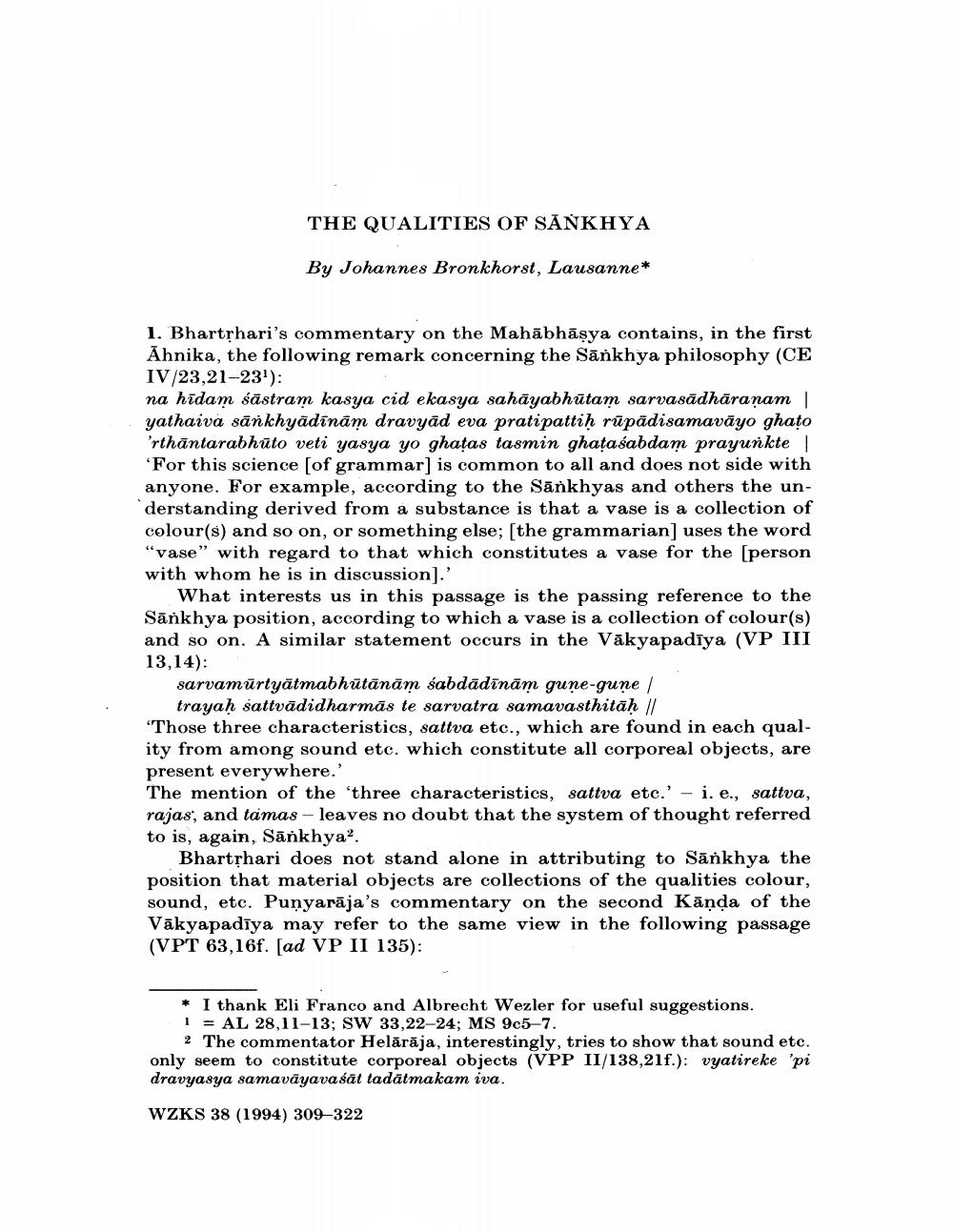Book Title: Qualities Of Sankhya Author(s): Johannes Bronkhorst Publisher: Johannes Bronkhorst View full book textPage 1
________________ THE QUALITIES OF SANKHYA By Johannes Bronkhorst, Lausanne* 1. Bhartrhari's commentary on the Mahābhāsya contains, in the first Ahnika, the following remark concerning the Sānkhya philosophy (CE IV/23,21-23): na hīdam śāstram kasya cid ekasya sahāyabhūtam sarvasādhāraṇam | yathaiva sankhyādinām dravyâd eva prati pattiḥ rūpādisamavāyo ghato 'rthāntarabhūto veti yasya yo ghatas tasmin ghataśabdam prayunkte 'For this science (of grammar) is common to all and does not side with anyone. For example, according to the Sankhyas and others the understanding derived from a substance is that a vase is a collection of colour(s) and so on, or something else; (the grammarian) uses the word "vase" with regard to that which constitutes a vase for the person with whom he is in discussion).' What interests us in this passage is the passing reference to the Sānkhya position, according to which a vase is a collection of colour(s) and so on. A similar statement occurs in the Vākyapadīya (VP III 13,14): sarvamūrtyātmabhūtānām sabdādīnām gune-gune / trayah sattvādidharmās te sarvatra samavasthitah // "Those three characteristics, sattva etc., which are found in each quality from among sound etc. which constitute all corporeal objects, are present everywhere.' The mention of the three characteristics, sattva ete.' - i. e., sattva, rajas, and tamas – leaves no doubt that the system of thought referred to is, again, Sankhya?. Bhartrhari does not stand alone in attributing to Sānkhya the position that material objects are collections of the qualities colour, sound, etc. Punyarāja's commentary on the second Kānda of the Vākyapadīya may refer to the same view in the following passage (VPT 63,16f. [ad VP II 135): * I thank Eli Franco and Albrecht Wezler for useful suggestions. 1 = AL 28,11-13; SW 33,22-24; MS 9c5–7. 2 The commentator Helārāja, interestingly, tries to show that sound etc. only seem to constitute corporeal objects (VPP 11/138,21f.): vyatireke 'pi dravyasya samavāyava sāt tadatmakam iva. WZKS 38 (1994) 309–322Page Navigation
1 2 3 4 5 6 7 8 9 10 11 12 ... 14
